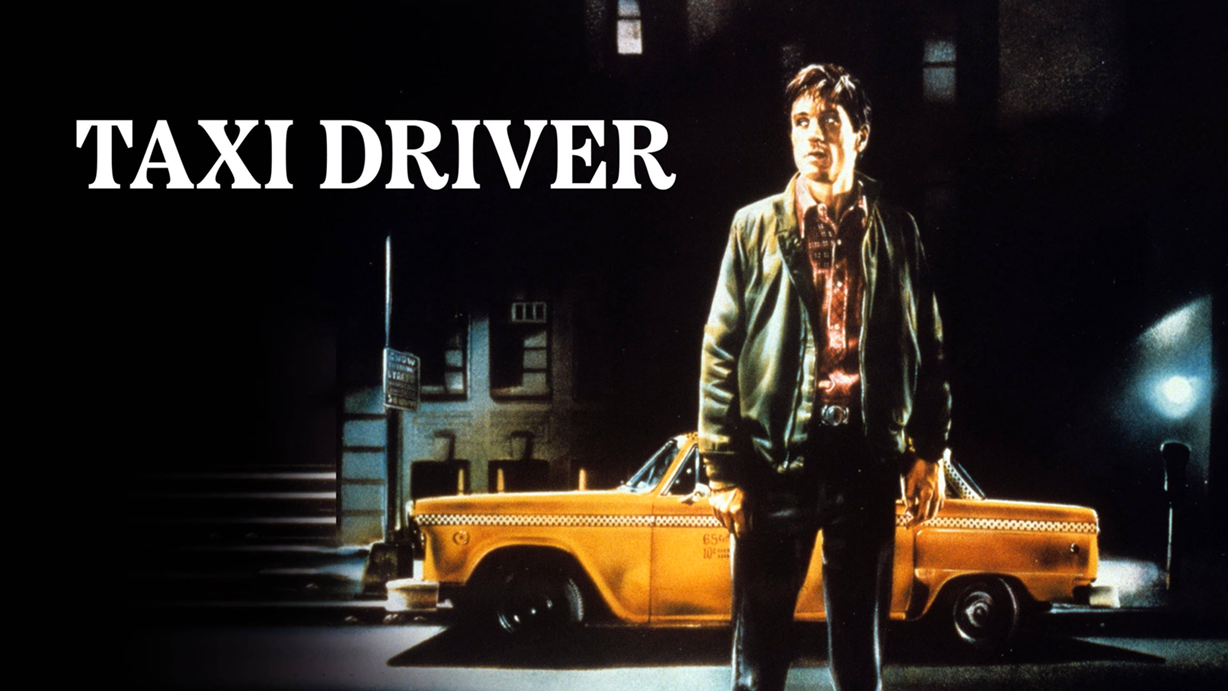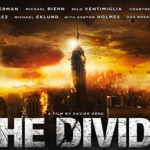Taxi Driver (1976)

“Taxi Driver,” released in 1976, is a groundbreaking American psychological crime film that has become a cornerstone of cinema, particularly within the neo-noir genre. Directed by Martin Scorsese and written by Paul Schrader, the film stars Robert De Niro as Travis Bickle, a disaffected Vietnam War veteran whose descent into madness serves as a haunting commentary on isolation, urban decay, and the search for identity in a fractured society.
Set against the backdrop of a gritty, post-Vietnam War New York City, “Taxi Driver” captures the bleakness of urban life in the 1970s. The city is portrayed as a dark, chaotic landscape filled with vice and moral decay. Scorsese’s direction masterfully conveys the suffocating atmosphere of the city, using stark cinematography and haunting sound design to immerse viewers in Travis’s increasingly unstable mental state. The film’s visual style, characterized by its use of shadows and unsettling imagery, effectively mirrors Travis’s psychological turmoil.
Travis Bickle is introduced as a lonely and disturbed individual, struggling with insomnia and grappling with feelings of alienation. His job as a taxi driver becomes a means of navigating the chaotic streets, but it also serves to heighten his sense of isolation. Through Travis’s eyes, we witness the city as a breeding ground for corruption and depravity, where he encounters a myriad of unsavory characters. De Niro’s iconic performance brings depth to Travis, portraying him as both a sympathetic figure and a potential threat. His internal monologue reveals the conflict within him—a desire to connect with others, juxtaposed with a growing sense of disillusionment and rage.
One of the film’s most significant themes is the struggle for connection in an increasingly disconnected world. Travis’s attempts to forge relationships often end in failure, highlighting the challenges of human interaction in a city that seems indifferent to individual suffering. His infatuation with Betsy, played by Cybill Shepherd, serves as a poignant reflection of his longing for intimacy and understanding. However, his inability to relate to her ultimately leads to alienation, pushing him further into his spiral of violence and despair.
The character of Travis also embodies the archetype of the “anti-hero.” Unlike traditional heroes, he is flawed, troubled, and morally ambiguous. His journey toward violence is unsettling yet compelling, raising questions about the nature of heroism and the societal factors that contribute to his breakdown. The film challenges viewers to grapple with their own perceptions of right and wrong, ultimately blurring the lines between victim and perpetrator.

Another critical aspect of “Taxi Driver” is its commentary on masculinity and the societal expectations placed on men. Travis’s transformation into a vigilante reflects a distorted view of masculinity, where strength is equated with violence. This theme resonates throughout the film, particularly in Travis’s interactions with other male characters, such as the gun dealer and the political figure Charles Palantine, played by Leonard Harris. Travis’s fixation on asserting control in a chaotic world underscores the dangers of toxic masculinity and the lengths to which individuals may go to reclaim a sense of power.

The film culminates in a violent climax that serves as both a cathartic release for Travis and a disturbing commentary on vigilantism. In a desperate attempt to “clean up” the city, he resorts to violence, leading to a shocking and bloody confrontation. This climax raises profound questions about the efficacy of violence as a means of achieving justice and the moral implications of such actions. The aftermath leaves viewers contemplating the cycle of violence and its consequences, ultimately suggesting that Travis’s journey is not one of redemption but rather a tragic descent into further isolation and despair.

“Taxi Driver” also features a haunting score by composer Bernard Herrmann, whose music amplifies the film’s emotional depth. The use of jazz elements combined with orchestral motifs creates a sense of unease, perfectly complementing Travis’s psychological state. The score is integral to the film, enhancing its noir sensibilities and reinforcing the themes of loneliness and existential dread.
Over the years, “Taxi Driver” has garnered critical acclaim and has become a cultural touchstone. It is often regarded as one of the greatest films of all time, influencing countless filmmakers and artists. Its exploration of psychological themes, combined with Scorsese’s masterful direction and De Niro’s iconic performance, has solidified its status as a seminal work in American cinema.

In conclusion, “Taxi Driver” is a profound exploration of isolation, urban decay, and the complexities of human nature. Through Travis Bickle’s harrowing journey, the film delves into the darker aspects of society while challenging viewers to reflect on their own perceptions of morality, masculinity, and the human condition. Martin Scorsese’s visionary direction and Paul Schrader’s incisive screenplay create a timeless narrative that resonates with audiences, making “Taxi Driver” an enduring classic that continues to provoke thought and discussion. As we navigate our own complexities in an increasingly chaotic world, the film serves as a haunting reminder of the struggles for connection and understanding in the shadows of urban life.
Suggested videos for you:
Behind Bars: The Fight for Justice
Suggested videos for you:
The Ultimate Survival Battle Between GODZILLA and the Cosmic Monster KING GHIDORAH
Suggested videos for you:










